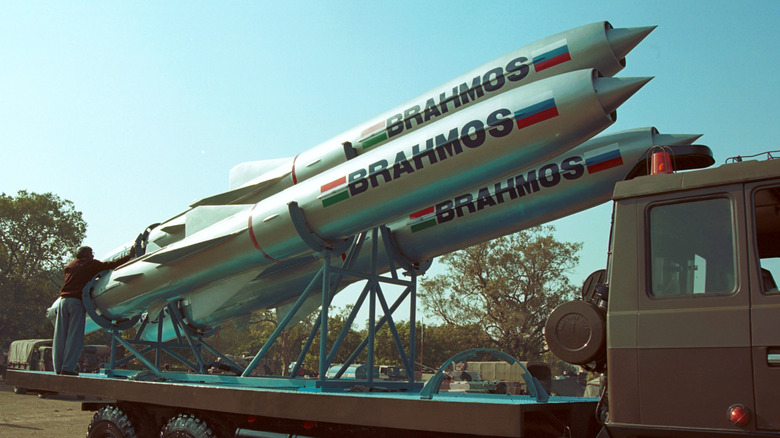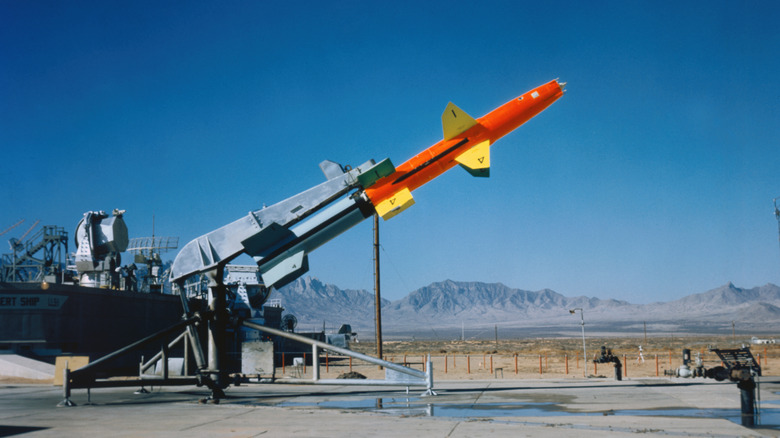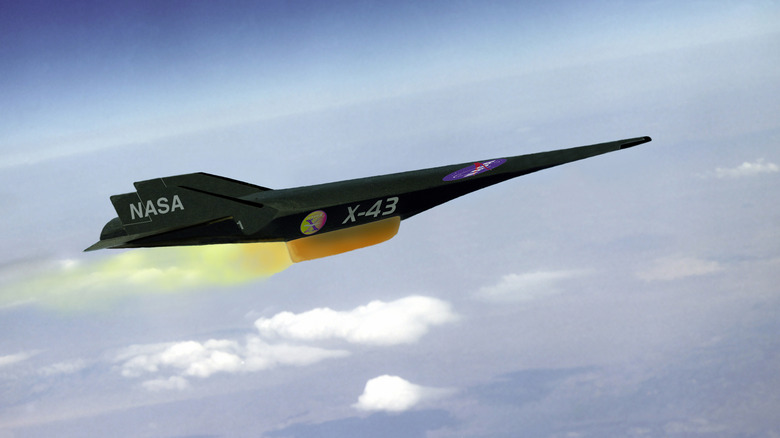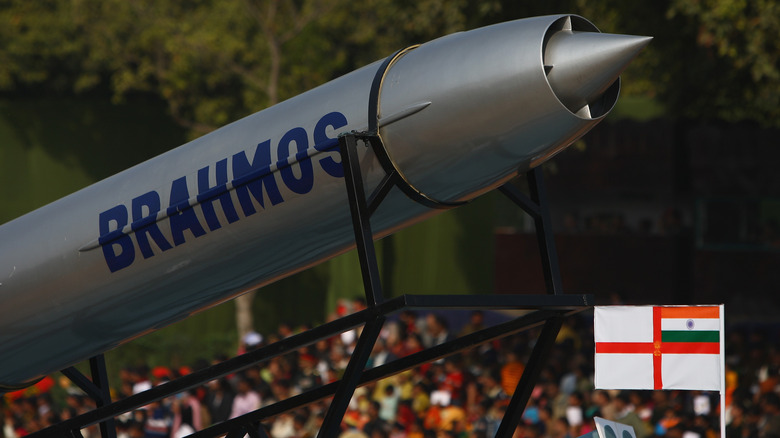Ramjet Vs. Scramjet: What's The Difference Between These Jet Engines?
A jet engine is any engine that can propel an aircraft of some kind via rearward expulsion of a jet of fluid, typically a hot exhaust gas that the engine generates by drawing in fuel from the atmosphere. Most modern jet engines seen by the general public use a gas turbine — also known as a gasifier, gas producer, core, or gas generator — to convert energy generated from the combustion of a hydrocarbon fuel into mechanical energy through a high-temperature, high-pressure airstream. The propulsor then takes that energy and harnesses it into thrust that pushes the aircraft forward.
However, not all aircraft use this type of engine: There are also ramjet and scramjet engines, which utilize different methods of generating energy to propel the aircraft forward. Some ramjet and scramjet engines can even break the sound barrier, allowing aircraft to move at a hypersonic speed thanks to the engine's unique architecture. Let's look at the differences between ramjet and scramjet engines.
What is a ramjet engine?
Ramjet engines are a type of experimental engine designed to have no moving parts. These types of engines lack the traditional gas turbine that helps generate combustion energy and forward thrust as would typically be present in a modern jet engine. Instead, ramjet engines rely on the immense air pressure generated by supersonic airstreams to propel the aircraft forward.
Ramjet engines provide a simple and lightweight propulsion system designed for supersonic flight. They draw in large amounts of air through the engine inlet using the forward motion of the aircraft. As the air passes into the inlet, it slows down, but the dynamic pressure from the velocity turns into high static pressure for combustion. The fuel-air mixture is burned, and at the exit of the inlet, the air is at a significantly higher pressure than free stream.
However, ramjet engines have a significant difference in operations from a standard turbine engine. Since there is no compressor or turbine, the engine has no way to draw air into it besides the forward motion of the aircraft. In a standard jet engine, the turbine draws the air in to create the fuel-air combustion mixture. Without the turbine to draw air in, the ramjet engine requires a consistent, high-speed, forward motion to create the combustion of fuel and air. At zero speeds, a ramjet engine is completely redundant. An aircraft must move at a speed of at least Mach 3 for a ramjet engine to work correctly.
What is a scramjet engine?
The scramjet — or "supersonic combustion ramjet" — engine is an innovation on the original ramjet engine design that changes the internal combustion chamber to remove the shock cones. In a traditional ramjet, the air entering the engine inlet is slowed by the shock cones which narrow the passageway for air pressure, and in turn, increase the jet's speed. However, scramjets use shockwaves produced by the engine's ignition source to slow the air entering the inlet for combustion instead.
Additionally, the scramjet engine is able to perform engine combustion at supersonic speeds, while the traditional ramjet must slow the air entering the engine inlet to subsonic speeds. This change allows scramjet engines to operate at higher speeds than ramjet ones. Scramjets can operate at Mach 6 and higher, with some tests reaching as high as Mach 10 cruising speeds when using these engines. However, like regular ramjet engines, their functionality requires a high speed to even begin operation. In testing, aircraft with scramjet engines must be lifted to altitude by another aircraft and then propelled to an operating speed by another engine before they can engage.
What are ramjet/scramjet engines used for?
In the current day, the practical application of ramjet/scramjet engines is somewhat limited. The most prominent use of the technology is in military weaponry; specifically missiles such as the BrahMos missile. Using a ramjet engine on a missile allows for a quick and efficient payload delivery. Ramjets and scramjets could also be used in high-speed military unmanned aerial vehicles, making them more effective and efficient in reconnaissance and other operations.
There are also experimental applications of ramjet and scramjet technology in the fields of air travel and space exploration. The use of these engines in air travel could significantly change commercial hypersonic flights. Currently, the only such hypersonic airline that existed was the Concorde. The hypersonic passenger plane was decommissioned more than two decades ago, and utilized turbojets at the time. However, future projects could utilize ramjets or scramjets in passenger air travel. Ramjets and scramjets could also be used in unmanned aircraft in civilian spheres, such as deliveries, assuming the technology can be commercialized on a wider scale.



